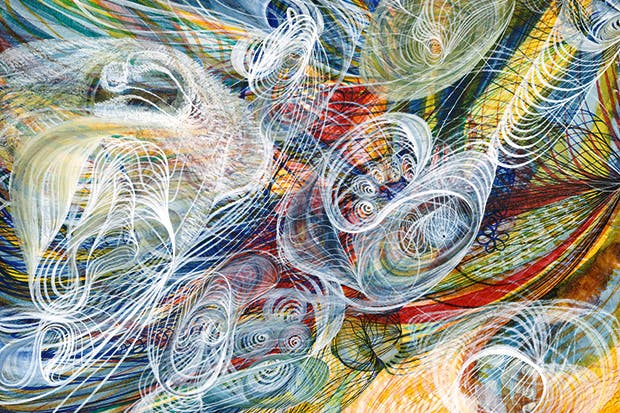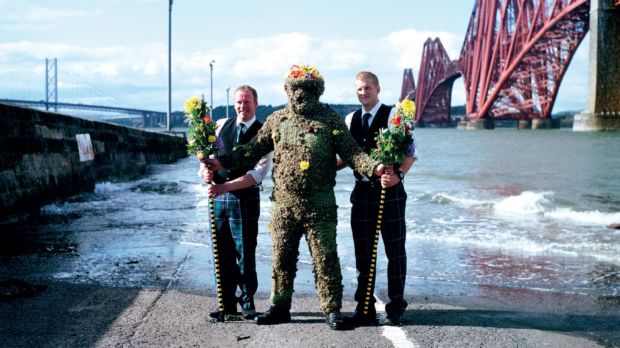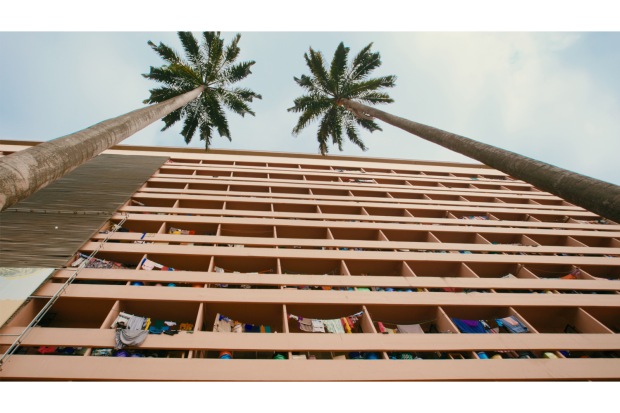It is London in the summer of 1871. Queen Victoria has just opened the Royal Albert Hall in memory of her beloved husband; Lewis Carroll’s sequel to Alice in Wonderland has just been published, and French refugees from the Franco-Prussian war continue to arrive in the capital. Among them is Claude Monet, who is having a miserable time in the fog and mist. Not far from the Thames views that he had been painting, a fellow artist has just opened her first exhibition of 155 ‘Spirit Drawings’ in a gallery on Old Bond Street, in the heart of London’s art quarter.
She was Georgiana Houghton (1814–1884), a 57-year-old London-based middle-class artist and celebrated spiritualist who had for the previous ten years been feverishly working behind closed doors on a series of abstract coloured drawings, which had been produced ‘guided’ by the hand of spirits. Now, with the encouragement of both an artist friend and her ‘invisible friends’, she felt ready to show her extraordinary endeavours to the world.
What she put on display was unlike anything any western artist had made, or any member of the British public had ever seen. The watercolour drawings, a little larger than A4, were intricately detailed abstract compositions filled with sinuous spirals, frenetic dots and sweeping lines. Yellows, greens, blues and reds battled with each other for space on the paper. The densely layered images appeared to have no form, and no beginning or end. There was no traditional perspective to enjoy. There was no mythological subject to interpret; no moral narrative to read, and no hint of portraiture or landscape to scrutinise. Instead, each work was accompanied by a detailed text written in her spidery writing outlining its spiritualist meaning. The drawings were titled accordingly with names such as ‘The Eye of God’ and ‘The Hand of the Lord and Heavenly Hopes’.
Houghton had been formally trained as an artist, possibly in France though we can’t be sure. She had been keen to be seen as such, and in census records she describes herself as ‘artist’. She had submitted her pictures to various prominent art institutions, such as the Royal Academy and the Dudley Museum and Art Gallery (her work was initially accepted by the former), but no one was prepared to take her on, and so her exhibition became the perfect amalgamation of her artistic passion and her religious aims.
But what had Houghton created? It is hard to imagine how radical and bizarre her artworks must have appeared to a Victorian visitor. Here was abstraction more than 35 years before Houghton’s fellow spiritualist and artist Hilma af Klint produced her extraordinary works (recently on show at the Serpentine Gallery). At the time, the average gallery-goer was more likely to see paintings by the Pre-Raphaelites, and the most radical art being painted in London was work like Whistler’s ‘Nocturne: Blue and Silver — Chelsea’ or Monet’s ‘The Thames below Westminster’. So it is no surprise that the critics who reviewed her exhibition wrote with a heady mixture of scorn, hilarity and bafflement.
In one article the reviewer stated that if ‘readers were to imagine such a thing as an accurate copy of coloured and white “Berlin” wools [colourful embroidery works used for house decoration], all tangled together in a flattened mass, framed and hung round a gallery, some idea could be formed of the appearance of this most strange exhibition’. In another, the critic wrote how ‘a visitor to the exhibition is alternatively occupied by sad and ludicrous images during the whole of his stay in this gallery of painful absurdities’, while a third wrote of ‘the strange hallucinations of which the human mind may be capable… If we were to sum up the characteristics of the exhibition in a single phrase, we should pronounce it symbolism gone mad.’
The reality was that nobody had a language to explain these odd-seeming images. While they did suggest forms, these were abstract in nature. As a result, Houghton felt that her art ‘could not be criticised according to any of the known and accepted canons of art’. She was right. How could anyone understand what she was doing? It had never been done before. The term ‘abstract’ was not applied to the visual arts until the 20th century. And while Houghton’s artist contemporaries such as Rossetti, Whistler and Holman Hunt had experienced, to varying degrees, the world of séances and table-tipping, had seen spirit drawing, and were open to the ideas of spiritualism, they didn’t stray from their figurative, allegorical, personal and highly emotionally charged paintings. They were more interested in telling stories through their works, while Houghton’s primary quest was to promote the spiritualist cause and to, as she put it, ‘show what the Lord hath done for my soul’.
Like many Victorians, Houghton had arrived at spiritualism through personal loss — in her case the death of her younger sister, herself an artist. As a method of contacting her in the afterlife, Houghton had rapidly trained as a spirit medium, and soon combined her new-found skill with the practice of drawing that was intended as an illustration of the spiritual world. Spiritualism had begun with the infamous Fox sisters in the United States in 1848, then arrived in Britain in 1852, spreading quickly across the country. The spiritualists’ belief that the living could communicate with the dead dwelling in the spirit world was largely played out in the shape of the séance, in which participants would attempt to contact the spirits of dead family, friends and others through the conduit of a spirit medium. Participants in the activities of spiritualists ranged from amused dabblers to those who immersed themselves in systematic inquiry into and experiment of its method and purpose. As such, spiritualism appealed to all social classes. Queen Victoria was known to be interested and had sought to contact her husband Albert after his premature death in 1861.
Sceptics were numerous and vociferous, no more so than those in the medical profession. A typical stance could be found in the British Medical Journal, which during Houghton’s exhibition published an anti-spiritualist piece, in which the writer stated that ‘so-called spiritualistic manifestations are simply due to a particular nervous temperament, and to certain forms of disease that have long been recognised and are thoroughly understood by the medical profession’. Despite all this, Houghton brushed off these ‘scoffs of the ignorant’. Her Christian faith sustained her belief, not just in herself, but in her art.
Looking at Houghton’s otherworldly works now, they seem as fresh as the day they were made. Yet the question is not so much whether she was a pioneer of abstraction, but how she discovered this strange and beautiful language that was so out of step with what anyone else was doing at the time. Houghton was an artist revolutionary, battling alone amid a clamour of dissenters and satirists, and she never wavered from her purpose.
After her death, however, most of her work disappeared, with the majority of the remaining works finding their way to the Victorian Spiritualists’ Union in Melbourne, where they have been quietly cherished and cared for for decades. It has taken more than 140 years to bring her back into the light.
Got something to add? Join the discussion and comment below.
Get 10 issues for just $10
Subscribe to The Spectator Australia today for the next 10 magazine issues, plus full online access, for just $10.














Comments
Don't miss out
Join the conversation with other Spectator Australia readers. Subscribe to leave a comment.
SUBSCRIBEAlready a subscriber? Log in